38 floating egg experiment worksheet
Floating and sinking water experiment. Subject: Chemistry. Age range: 14-16. Resource type: Worksheet/Activity. (no rating) 0 reviews. Judith Connell's Shop. 4.571428571428571 10 reviews. All of the resources I have uploaded have been made by myself, and I have used them throughout my teaching career.
5. Carefully place the egg in a beaker. Pour vinegar in the beaker until it just covers the egg. ***The egg will float. A small part of the egg will not be submerged in the vinegar.*** 6. Place the beaker on the counter, and return the other materials to the supply table. Hypothesis: Predict how the egg will respond when left in vinegar for 24 ...
lection worksheets at the station, along with small water proof items from around the classroom (that were not used during the class experiment.) Also provide some paper towels. This station will need to be closely monitored, but have the students regulate their own experiments with things that float or sink using the provided objects.
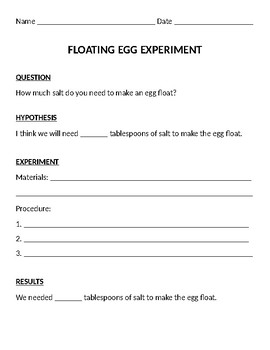
Floating egg experiment worksheet
Experiment : Do Eggs Float? Experiment time- Orange and Egg activity. Work on booklet- Pages-Floating and Sinking Activity Observations ( Orange and Egg) ... Worksheet : Sort into groups- Sink float (Sort Buoyant and non buoyant) Sinking Floaters. Challenge: Can you take something that floats, and alter it to make it sink ? ...
added before adding the fat. To "just float" in this case means to make the top of the egg just touch the top of the solution, without any significant amount of the egg protruding above the surface of the solution." 2 The objective of this lab is to obtain a solution that "just floats" an egg and determine its density.
Transparent Egg Materials: raw chicken egg white vinegar bowl What to do: Place the egg in the bowl. Pour enough vinegar into the bowl to completely cover the egg. After 24 hours, you will notice the shell is starting to dissolve. There will be some floating particles on top of the bowl. Carefully
Floating egg experiment worksheet.
What happens when you put an egg in a glass of regular water? This is a cool way to learn about density. Materials: One egg Water Salt (1 - 2 cups) A tall drinking glass A spoon Instructions: 1. Pour water into the glass until it is about half full. 2. Place an egg in the glass of water and see if it sinks or floats (it should sink). 2. Stir in lots of salt. Start with 1 tablespoon and stir it ...
In this experiment your students will be able to explore density of matter by learning how to make an egg float. Students will change the density of water during the course of the experiment causing the egg that initially sinks, to float on top of the water. This experiment is set up using STEM Fa
Gently place one raw egg in each container. Watch the eggs for a few seconds. What happens? Results: The egg should float in salt water, but not in fresh water. Why? The key to this experiment is density. Density deals with how closely packed together a substance is. You can see density in your food.
Floating egg experiment worksheet. Add salt iodized or non-iodized to water and mix solution. They can predict experiment record data and analyze results. Develop a hypothesis for which container salt or fresh water will cause the egg to float. If not add more salt Now put half as much salt in glass 3 as you did in glass.
Jul 23, 2012 · The floating egg experiment is a good example. We did this experiment as part of our ocean unit. Probably half the class correctly hypothesized that the egg would float in the salt water but everyone was excited to see it actually happen. Here’s the sheet (you can download it below) that I use with my class.
Easy Sink or Float Egg Experiment from Kindergarten Worksheets and Games. This egg experiment is a fun way for kids to learn about density. Egg Science Egg Races from Little Bin for Little Hands. Racing plastic Easter eggs is a fun way to learn about physics. Crystal Egg Science from Childhood101. Grow some crystals in the outside of eggs.
This introduction is followed by an experiment. The experiment is a great example of instant gratification science! In this activity students will form a hypothesis about how many teaspoons of salt it will take to float an egg in one cup of water. The hypothesis is then tested and the results are analyzed.
Note: Find more STEM activities on my Science Activities for Kids page! To prepare for the floating egg experiment, gather the following materials: 2 glasses of water. 2 eggs. Stirring spoon. 1 tablespoon. Salt. Optional: towel to mop up any spills. Gently place an egg into the first glass of water.
worksheet. (The egg should sink in the freshwater and float in the saltwater). 5. Have students place the hard-boiled egg into the regular water and record observations on the worksheet by drawing what happens. 6. Have students place the hard-boiled egg into the saltwater cup and record observations on worksheet by drawing what happens.
Floating Egg Science Experiment Materials Egg Salt Water Drinking Glass Instructions Fill a tall drinking glass about 3/4 full of water Place the egg into the glass of watch and watch it sink Fill another tall drinking glass about 3/4 full of water Add 3 Tablespoons of Salt and stir until combined Place the egg into the glass and watch it float
Students experiment floating a variety of objects in various liquids. They discover how density affects the ability of an object to float and apply the concept of density to solve problems. + Lesson Planet Make An Egg Float! For Teachers 4th - 5th Learners analyze density. In this density lesson, students experiment with floating an egg.
18. $2.00. PDF. In this experiment your students will be able to explore density of matter by learning how to make an egg float. Students will change the density of water during the course of the experiment causing the egg that initially sinks, to float on top of the water. This experiment is set up using STEM Fa.
Chapter 7 7_Experiments With Water Page 51 For more worksheet click ( www.kv.school 2- Write 'T' for True and 'F' for False statements. (i) A flat dough will float on oil whereas puffed puri sink in it. c (ii) Soap and soapcase both float in water. c (iii) All ocenas and seas have salty water. c (iv) A person cannot get drown in Dead sea. c
The Science behind the Experiment. The egg won't float in regular water because it's heavier than the water. But adding salt to the water makes the water more dense than the egg, and it floats! We have a book called "Let's Visit Israel," and my 3-year old will talk about this phenomena when we reach the page about floating in the Dead ...
Kids are going to love this crazy cool bouncy egg experimert!Children will be amazed by this egg experiment where they will literally dissolve the shell of a raw egg to create a bouncy egg.This bouncy egg vinegar project is fun for preschool, pre-k, kindergarten, first grade, 2nd grade, 3rd grade, and 4th grade students. Plus our version of this egg in vinegar experiment has a fun, colorful twist!
Density and buoyancy worksheet answers
Sink Or Float Experiment + Worksheet. Our children love this experiment and they're a wide variety of ages. This is because the older they get, the more "creative" they'll get with the items that they want to use to sink if they sink or float. Don't worry, as long as the items are safe, let them have fun.
VIDEO DESCRIPTION - FLOATING EGGS SCIENCE EXPERIMENT FOR KIDS. In this science experiment for kids video, you will find detailed information about the "FLOATING EGGS" activity, designed for children 4-6 years old. Here they will experiment with eggs in water, adding salt to see what happens.
• Two raw eggs Directions • Review the “Scientific Method” and “Scientific Journal” worksheet online. • Prepare your own scientific journal for this experiment (example below). • Develop a hypothesis for which container (salt or fresh water) will cause the egg to float. • Fill the two containers with equal amounts of tap water.
Earth Science Experiments, Floating Eggs These Earth Science Experiments use fresh eggs for a fun and easy science activity. In this experiment you will learn how eggs can actually float in water instead of sinking. After getting your eggs to float you will try floating an egg between fresh and salty water. Materials Fresh egg Water glass Water
You'll need a few things for this egg floating experiment: 2 eggs 2 jars Salt First, heat one jar of water so that it's easier to mix the salt into it. This will save you time, but don't let the kids touch the jar when it's hot. If you live near the ocean, you can just use seawater as well for this experiment, but it will look dirty.
Make An Egg Float! For Teachers 4th - 5th. Learners analyze density. In this density lesson, students experiment with floating an egg. Learners discover that salt added to water changes the density of the water allowing an egg to float. Get Free Access See Review.
Floating Egg Experiment Floating Egg Experiment is a simple science experiment for kids. With the use of an egg, salt and water, kids will learn and understand the concept of floating. They will learn how and why lighter objects can easily float in water and heavier objects sink to the bottom.
Things You Need For The Floating Egg Experiment The floating egg science experiment is a simple and inexpensive way to help kids understand their lessons on density. All you need are some eggs and salt water. Here is a list of things you'll need to perform the experiment: 2 Eggs (ensure they are the freshest eggs possible) 2 large glasses

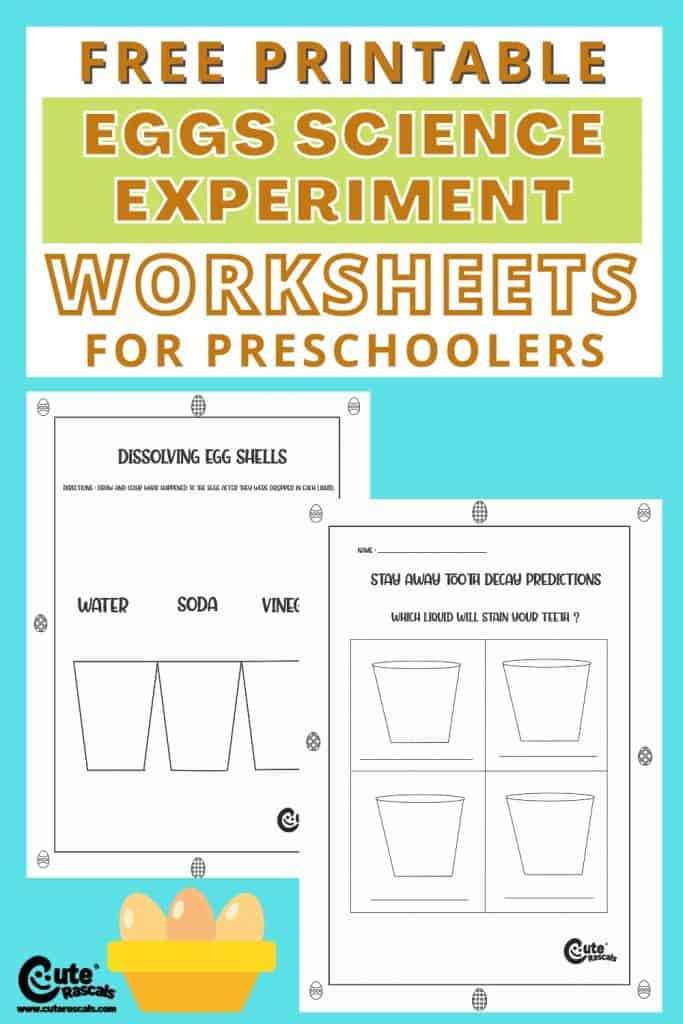
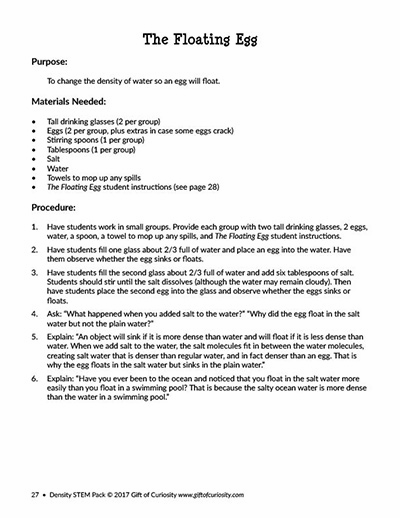






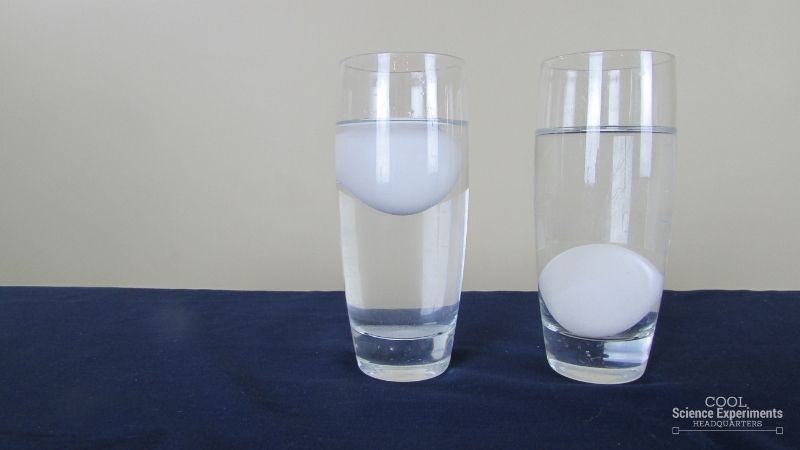
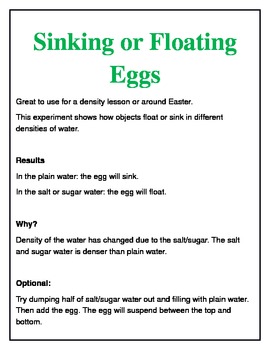

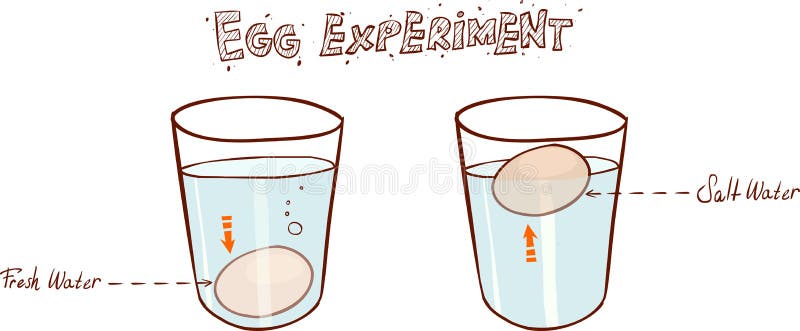
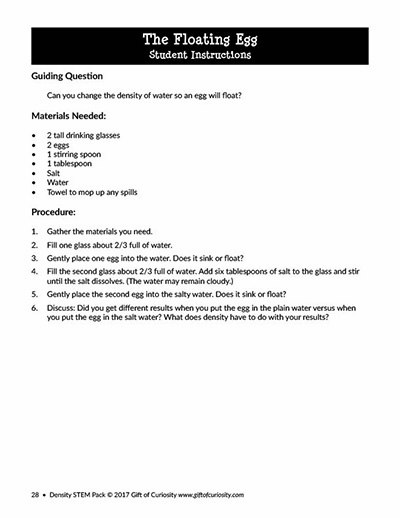
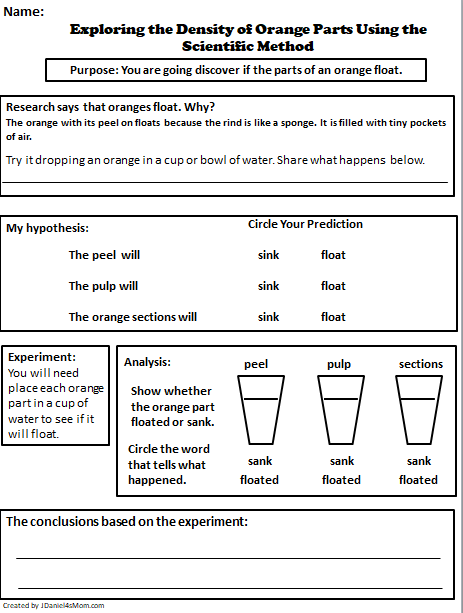




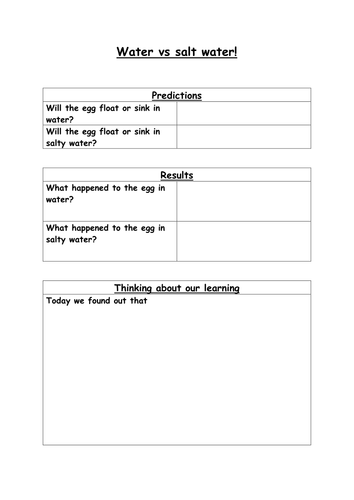
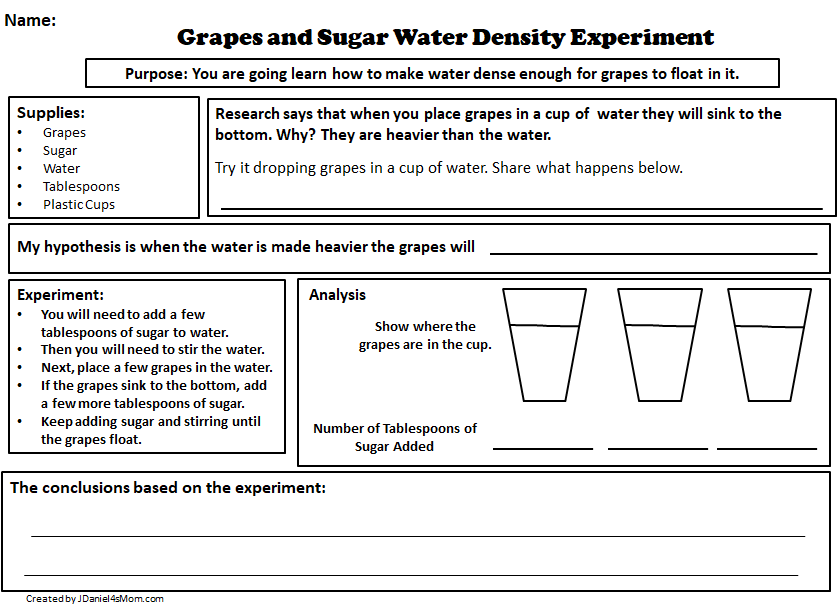



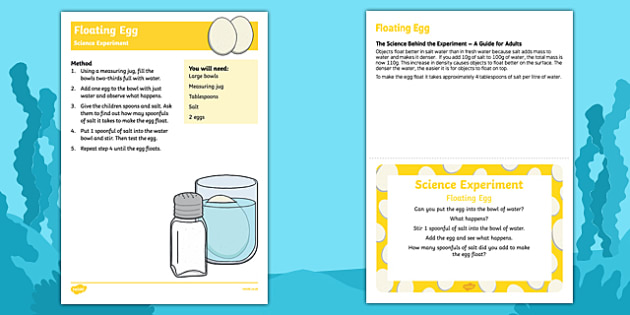
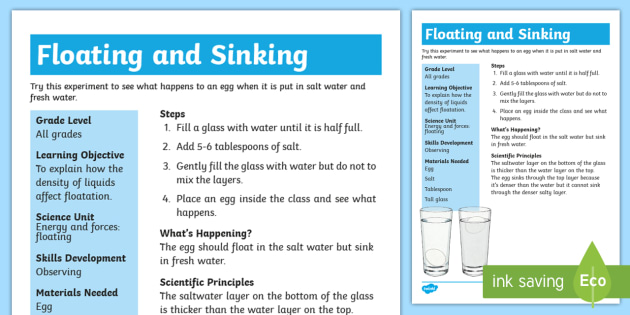






0 Response to "38 floating egg experiment worksheet"
Post a Comment